Suppose that there is a dataframe which contains the following data:
Freq=c(0.15,0.25,0.6)
x=as.factor(c("Some long long long long text", "Another long long long long text", "But, this is really long long long long long text" ))
df<-data.frame(x=x, Freq=Freq)
And from this dataframe I would like to make a particular plot such as this one:
ggplot(df, aes(x=x, y=Freq)) +
geom_bar(stat="Identity", fill="dodgerblue3", width=.7) +
geom_text(aes(y = Freq, label = scales::percent(Freq), vjust = -0.5))+
scale_y_continuous(labels=scales::percent, name ="", limits = c(0,0.7), expand = c(0,0))+
scale_x_discrete(labels = levels(df$x), name="")
As you can see, the problem is that the labels of my discrete variable x, because are too long, do not appear nicely.
A very ad hoc solution that I could think, was to do this:
ggplot(df, aes(x=x, y=Freq)) +
geom_bar(stat="Identity", fill="dodgerblue3", width=.7) +
geom_text(aes(y = Freq, label = scales::percent(Freq), vjust = -0.5))+
scale_y_continuous(labels=scales::percent, name ="", limits = c(0,0.7), expand = c(0,0))+
scale_x_discrete(labels = c("Some long \n long long \n long text", "Another long \n long long \n long text", "But, this is \n really long long \n long long \n long text"), name="")
Which gives me this figure:
So, my question is whether there is another solution which does not require a manual intervention in the labels as I did.

